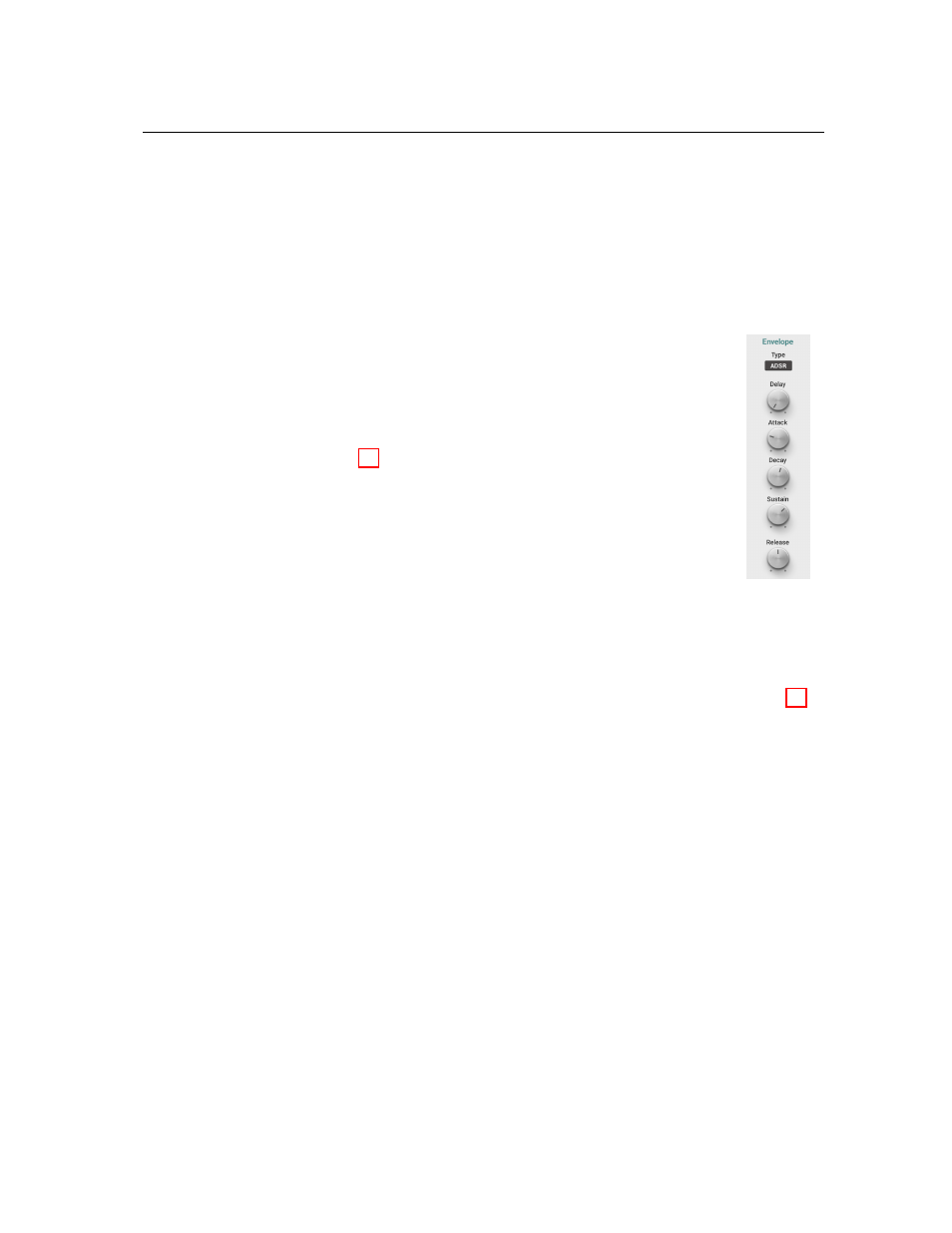The noise envelope module – Applied Acoustics Systems Chromaphone 3 Upgrade Acoustic Object Synthesizer Plug-In (Download) User Manual
Page 47

5.3
The Synth Section
47
resonator A and hence the frequency of its fundamental and partials depending on the settings of
resonator B. In other words, one starts to hear resonator B more and more in the final sound. The
amount of coupling or balance (in the case where they are in parallel mode) between the resonators,
can be modulated with the pitch of the note played with the
Key
control.
5.3.6
The Noise Envelope Module
This module is an envelope generator used to modulate the amplitude of the noise
source as well as its
Frequency
and
Density
controls. The envelope generator can be op-
erated in ADSR or AHD mode. The
Type
drop-down control is used to select between
these options.
In ADSR mode, the envelope is divided in four phases:
Attack
,
Decay
,
Sustain
and
Release
as illustrated in Figure 24. During the attack phase, the envelope signal goes
from a value of zero to a value of 1 in a laps of time controlled by the
A
knob. The decay
phase then begins and the signal goes from 1 to the sustain value of the signal in a laps
of time controlled by the
D
knob. The level of the sustain portion of the modulation
signal is adjusted using the
S
knob. This value is held as long as a note is depressed.
Upon release of the note, the signal then decreases from its sustain value to zero in a
laps of time controlled by the
R
knob. If the note is released during the attack or decay
phase, it will switch to the release phase and decay to zero. The
Delay
knob of this module is used
to add a delay between the triggering of a note and the start of the envelope. This is useful to add
noise to the excitation signal following the initial impact noise from the
Mallet
module.
The AHD mode is used to create envelopes for short attack sounds such as in one-shots. In this
mode, the envelope is divided in three phases:
Attack
,
Hold
, and
Decay
as illustrated in Figure 25.
Once triggered, the complete envelope signal is generated even if the note is released before the
end of the envelope itself. During the attack phase, the envelope signal goes from a value of zero
to a value of 1 in a time interval controlled by the
A
knob. The envelope signal then remains at this
peak value during a time determined by the
H
knob. The signal then decreases from this value to
zero in a lapse of time controlled by the
D
knob.
